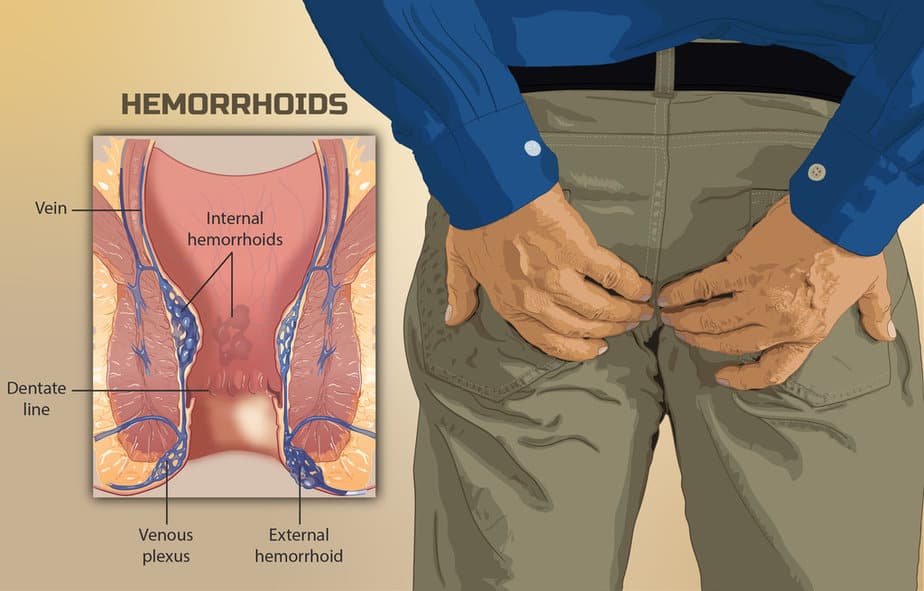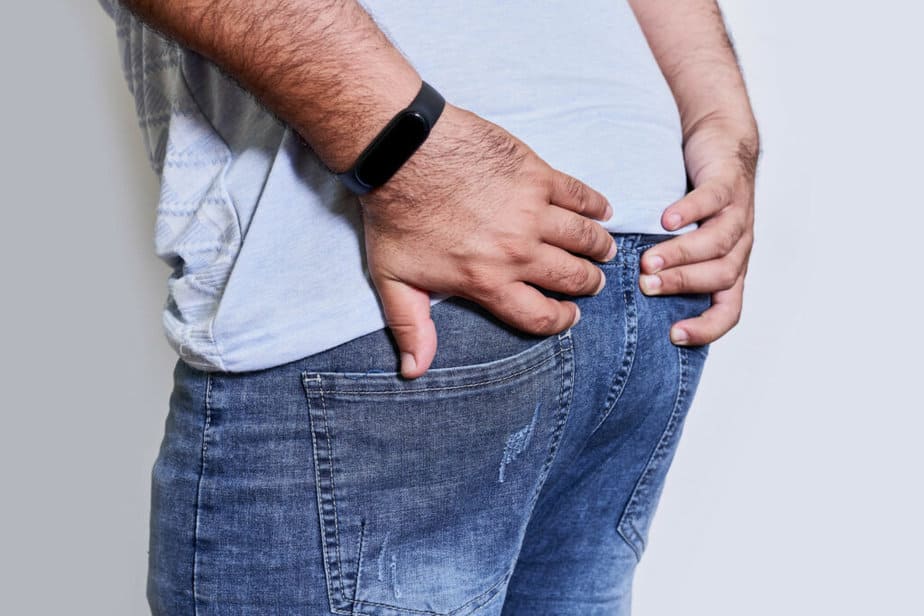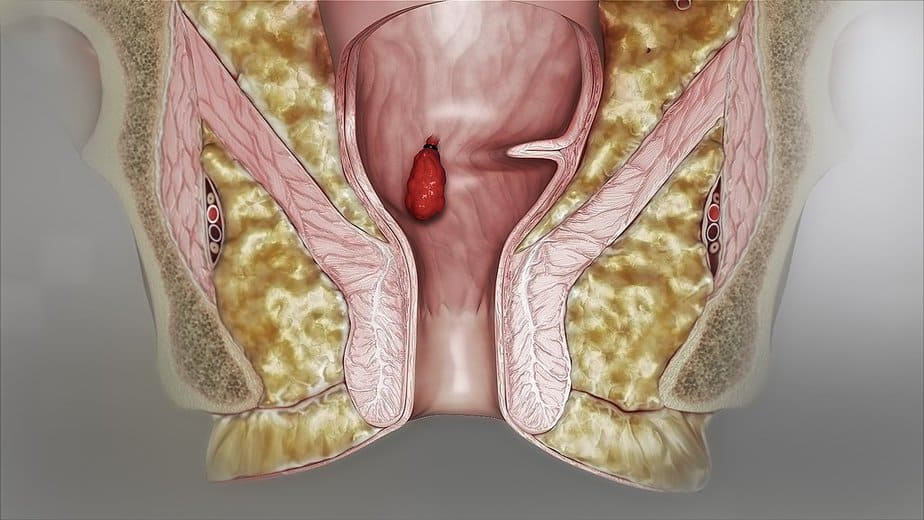Nebula Genomics DNA Report for Hemorrhoids
Are hemorrhoids genetic? We created a DNA report based on a study that attempted to answer this question. Below you can see a SAMPLE DNA report. To get your personalized DNA report, purchase our Whole Genome Sequencing!

Table of contents
Are Hemorrhoids Genetic?
Hemorrhoids have lots of risk factors that can lead to their development. Heredity is one of those factors. This means that there is a high risk to develop the condition if you have a family history of hemorrhoids. As mentioned above, we are all born with hemorrhoids and they are not a problem unless they get inflamed.
However, whether they stay on the spot they are without any problem depends on the strength of the muscles and cartilages. This is where genetics comes in. Genes affect the strength of bones, muscles, and cartilage. If you inherited genes for weaker colorectal muscles and connective tissues, you may be at greater risk.
In 2021, a large scale genetic study, published in the BMJ Journal Gut and coordinated by Prof Andre Franke at IKMB in Kiel Germany and Prof Mauro D’Amato at CIC bioGUNE in Bilbao Spain, shed light onto genetic factors linked to hemorrhoids. They identified 102 regions in the human genome that contain genes linked to increased risk of developing hemorrhoids. These genes help smooth muscle function and aid the development and integrity of epithelial and endothelial structures in the gut, suggesting the condition is at least in part caused by smooth muscle dysfunction.
Introduction
Hemorrhoids are enlarged and swollen blood vessels that arise in the anus and lower rectum. These enlarged veins are painful, causing discomfort and blood filled cushions that cause bleeding in the rectum. Everyone is born with them, but they typically don’t cause problems. That is, they only produce irritating symptoms when they become abnormally swollen and enlarged.
This swelling causes serious irritation, pain, and itching in the rectum and anus areas. A doctor can diagnose and treat the condition. Adequate fiber consumption (found in foods like fruits, vegetables, and whole grains) can help to prevent hemorrhoids.

There are different types of hemorrhoids and the type you experience depends on where the enlargement occurs. Swelling can either be inside the rectum or outside the anus. The various types include:
Internal: This kind happens when the swollen veins develop inside the rectum, the part of the digestive tract that connects the intestines to the anus. When you have internal hemorrhoids, you experience bleeding, but they are less painful than other types.
External: People develop this kind under the skin around the anus. It is usually around the canal from where feces are passed out. External hemorrhoids are painful and itchy and may bleed.
Prolapsed: This happens when both internal and external hemorrhoids stretch through the anus with a bulge. Prolapsed hemorrhoids can be painful and bleed.
Patients may experience a thrombosed hemorrhoid if a blood clot forms in one of the other types, usually the external one. This condition cuts blood flow to the area and can be very painful. In most cases, the blood clot goes away on its own and symptoms resolve.
Epidemiology
The overall prevalence of hemorrhoids in the United States is estimated to be around 10 million people, or about 4.4% of the population. Although there is limited information regarding prevalence, doctors in the United States and the United Kingdom have seen that people visiting hospitals for the condition has fallen over the years.
Hemorrhoids tend to affect people as they age. According to HD Treatment Center, about half of Americans age 50 and above develop them. Overall, 1.5 million new cases occur each year with about 20% requiring surgery. Most cases go undiagnosed.
Both men and women can get hemorroids and the most common age of reporting them is between 45 and 65 years. Studies suggest that men seek immediate treatment when they occur more than women. Changes caused by pregnancy can also increase the tendency of hemorrhoids in women.
Experts notice that the condition affects those who are White more than other races and link it to higher socioeconomic status.
Another factor that can predispose an individual is hereditary. People who have a family history of hemorrhoids should take measures that can decrease their risk of having the issue, such as getting enough fiber, drinking water, exercising, and not straining in the bathroom.
Symptoms
There are different symptoms depending on the kind of hemorrhoid you are experiencing. Internal hemorrhoids occur in the rectum but they are usually or mostly painless. Put another way, they do not cause pain unless they are prolapsed.
People with internal hemorrhoids rarely seek hospital treatment because of the mild nature of the symptoms. Sometimes the only obvious sign is rectal bleeding when using the bathroom.
When you have internal hemorrhoids, the most likely symptom you will experience is blood in toilet bowls and on toilet paper. This is quite different when you are suffering from external hemorrhoids. With this condition, the bleeding is usually followed by pain and itching. It can be uncomfortable and interfere with quality of life.

The symptoms that follow prolapsed hemorrhoids are similar to the external kind. It can be seriously painful and uncomfortable. Also, when you are experiencing prolapsed hemorrhoids, you will be able to feel the bulge outside the anus, which you can push back gently.
The major symptoms of hemorrhoids are:
- Aches, pain, and swelling in the anus, especially when you sit down
- Itching in the anus
- Tender or sore hard lumps around the anus
- Bleeding in the rectum
Causes
It is difficult to point to anything particular as being the cause of hemorrhoids. There are various factors that lead to the risk of hemorrhoidal disease. These factors include irregular bowel habits, low fiber content in diets, increased intra-abdominal pressure, hereditary, lack of exercise, etc.
Strains on the rectum and the anus that puts too much pressure on veins can cause the condition. Things that cause this include:
- Straining during bowel movements
- Spending too much time time on the toilet
- Having chronic diarrhea or constipation
- Being obese
- Having a sedentary lifestyle or sitting for long periods of time
- Being pregnant
- Having anal intercourse
- Eating a low-fiber diet
- Regular heavy lifting
Squatting while passing feces can also cause serious issues, as well as pregnancy. This kind is usually not severe and does not require surgery as the symptoms disappear after giving birth. The following is a summary of some of the main factors that can cause hemorrhoids:
Aging: The problems of hemorrhoids are usually common in adults that are over the age of 50 years.
Chronic constipation and diarrhea: Hemorrhoids can result from strains of chronic constipation and diarrhea.
Diet: Consumption of foods that are low in fiber can cause hemorrhoids
Diagnosis
Doctors diagnose hemorrhoids based on a physical exam in which they observe the severity of the symptoms. These tests involve inserting tubes into examine the linings of the rectum and anus. Although they can be uncomfortable, they are not usually painful. Patients typically undergo them without anesthesia and return home same day.
Anoscopy: Doctors use a light tube called an anoscope to view the lining of the rectum and the anus. Doctors will look for a bulge as a result of swollen or enlarged vein.
Sigmoidoscopy: This is similar to the use of an anoscope. Doctors use a light tube that has a camera to view the sigmoid part of the colon and rectum. The procedure has different types, they include rigid sigmoidoscopy and flexible sigmoidoscopy.
Digital rectal exam: Viewing the linings may not be enough to tell if the bulge in the rectal is a result of an enlarged vein. In the digital rectal examination, the healthcare professional uses a gloved lubricated finger to feel the lining of the rectum. They insert the glove into the rectum to feel it for an enlarged vein.
Colonoscopy: This is an advanced test that is done to examine the colon for possible colon cancer. It is also done to confirm the results from other procedures.
Treatment
Patients can treat and manage hemorrhoids depending on the severity of the symptoms. When treating hemorrhoids it is important to treat their underlying cause such as diarrhea and constipation. Different types of treatment can be used to manage hemorrhoids. They include options that can be done at home and those provided by a healthcare professional.
Home treatments
Lifestyle change: Doctors often recommend that patients drink more water and get more fiber in their diet, either through dietary adjustments, fiber supplements, or both. Fibers help to soften stools. Another way to manage this issue is by engaging in regular exercise. However, it is advised you see a doctor if symptoms persist. Patients can also soak in warm water or sitz baths daily to reduce the irritating symptoms.
Medication: Patients can apply over-the-counter medications containing lidocaine, witch hazel, or hydrocortisone to the affected area. Addition medications include stool-softening laxatives to make bowel movements easier and NSAIDS to reduce pain.
Procedures
Rubber band ligation: A doctor will places one or two tiny rubber bands around the base of an internal hemorrhoid, which cuts off its blood supply. This procedure can be uncomfortable and may cause minor bleeding. More serious complications may occur but it is rare.

There are other minimally invasive ways to destroy hemorrhoids. These procedures include those involving chemical injections or heat.
Surgery
Hemorrhoid removal: A doctor can surgically remove severe hemorrhoids, both external and prolapsed internal ones. It is considered the most effective way to treat severe or recurring hemorrhoids.
Hemorrhoid stapling: Also called hemorrhoidopexy, it is another surgical procedure in which the surgeon uses a stapling instrument to remove an internal hemorrhoid by blocking blood flow to hemorrhoidal tissue. This method is typically only used for internal or prolapsed hemorrohoids. Although this procedure usually involves a shorter recovery time, there appears to be a greater chance of recurrence. There are also more complications than hemorrhoidal removal, such as bleeding.
If you liked this article, you should check out our other posts in the Nebula Research Library!
April 28, 2023
